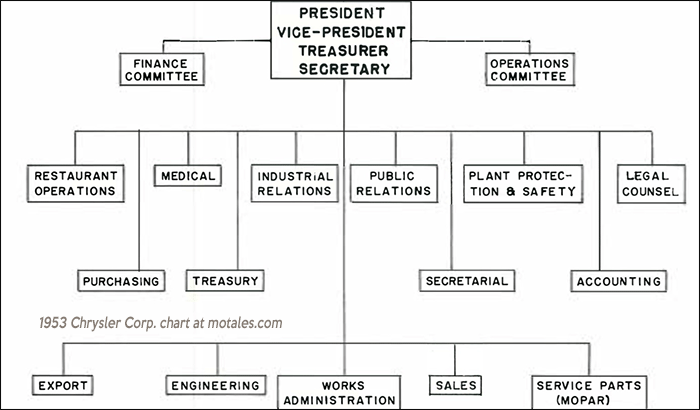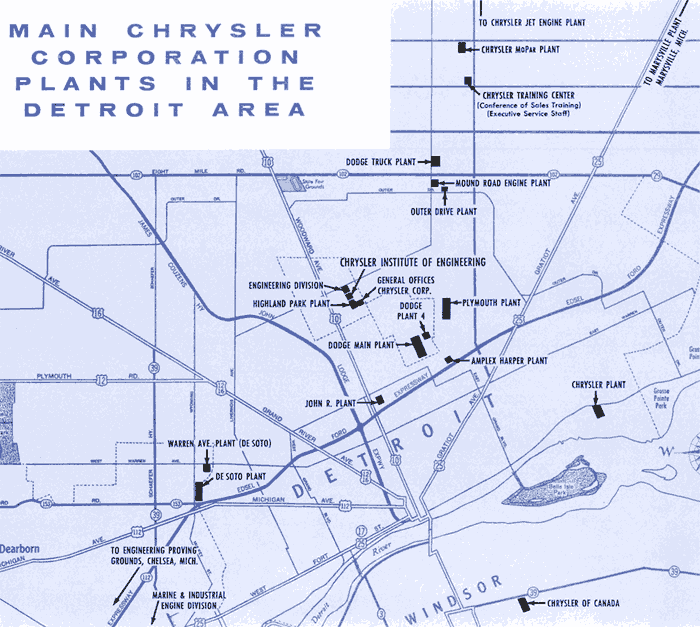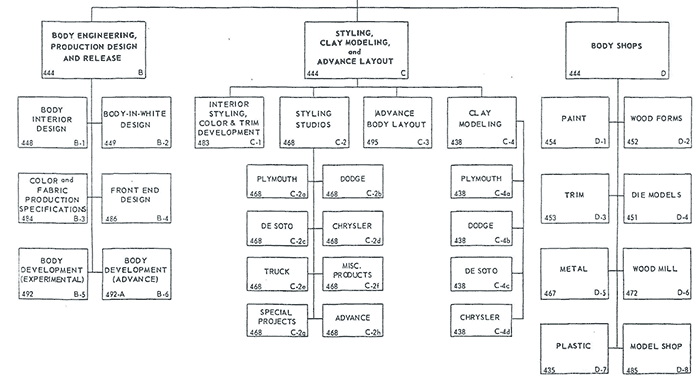1953 was in some ways a key year, because the people who had rescued Maxwell and then created and marketed the first Chrysler were almost all gone. The Three Musketeers (Zeder, Skelton, and Breer) had passed on, and Chrysler was in many ways at a loss without them—even with Fred Zeder’s youngest brother, James C. Zeder, at the helm of Engineering and Research.
The company’s organization was anachronistic in some ways. Principal divisions were based on cars, trucks, and (via the Marine and Industrial divisions) engines; almost independent of the company were side businesses such as air conditioning (AirTemp), sintered metals and such (Oilite), other specialty materials (Amplex), and the rocketry/aerospace, electronics, and military groups.

Executive in charge of each key divisions were vice presidents of the main corporation, along with heads of engineering functions, sales, export, accounting, the president’s office, and the “General Works Administration” (manufacturing, in-house repairs, and special car planning).

Plants were mainly in the Detroit area, but satellite plants in places such as Los Angeles and Windsor (Canada) also made almost the entire lineup for ease of distribution or to meet local laws. Each plant held extensions of the normal staff lines—Industrial Relations (today, Human Resources); Plant Protection (today, Security); Tool and Die Engineering; Product Engineering; Sales; and Accounting. Sales groups were attached to most major plants, as they made a specific product—a Chrysler, a Dodge, a Plymouth, AirTemp cooling, etc. Except for the satellite plants, each factory was part of one marque—so Dodge Main, for example, made only Dodges until late 1959.
A special group, the Chrysler Export Corporation, handled the sales and service in foreign countries except Canada, which was handled by the Chrysler Corporation of Canada with plants in Windsor, Ontario. The Export Corporation operated as part of Sales and did not have its own factories (in Canada, there was a plant designated for export conversions).
The Chrysler Parts Corporation, now dubbed MoPar Corporation, had a plant in Marysville, Michigan to process, store, and ship parts. (These corporations were completely owned by the main corporation.)

Engineering had three basic divisions: design, construction of prototypes, and testing. The prototypes group was not split out on organizational charts, but it was done by Car Body Shops and Experimental Assembly and Test. The Car Product Engineering and Truck Product Engineering groups (design) went right into the plants; some key Chrysler people rose through the plant engineering groups to the top of their divisions. Engineering was led by a vice president who was the director of engineering and research; and by the engineering exeutive board. On the organizational charts, “development engineering” was any work done on a vehicle or part before it entered production, while “research” looked at materials or processes to be used in making them.

Source: Chrysler Institute of Engineering materials supplied by Al Bosley; background knowledge.
Copyright © 2021-2025 Zatz LLC • Chrysler / Mopar car stories and history.
YouTube • Editorial Guidelines • Videos
Tailfins Archive • MoTales on BlueSky